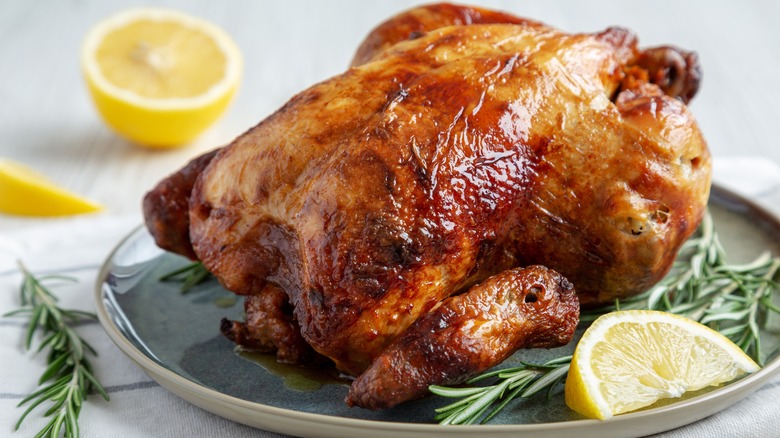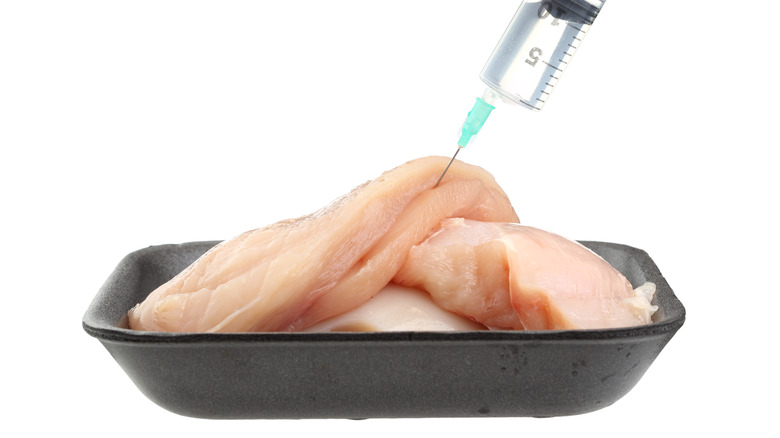Why You Shouldn't Buy Brine-Injected Chicken At The Grocery Store
While often coveted as a lean, affordable, heart-healthy protein, chicken has gotten a bad rap over the years for tasting like, well, chicken. It's typically not a type of meat lauded for its flavor or suppleness. One solution to this has been the implementation of an industrial practice to give that bird a bigger bang for its buck in terms of flavor and texture.
The process of "plumping" poultry has been around since the 1970s (via LA Times). Chicken, and some other meats, are injected with a saltwater solution — and oftentimes other natural flavors such as broth, sugar, seaweed, or concentrate — to enhance flavor, add moisture, and tenderize the meat. These injections can make up to 15% of the meat.
While not necessarily a practice with malicious intent, there are some controversies to the method that are worth being aware of, given Americans consume some 90 pounds of chicken per year, notes The Wall Street Journal.
Tastes just like chicken?
The reasons to avoid brine-injected grocery store chicken are varied — with taste, nutrition, and cost at the forefront.
First and foremost, whether you've chosen chicken for its taste or health benefits, you probably want to enjoy it. While professional poultry producers claim the injections augment flavor and texture, chef Jon Sloan, the culinary director at Crack Shack, told Food & Wine that industrial plumping practices can actually spoil the two important factors of texture and flavor.
Of equal importance is that if you are purchasing what you believe to be a healthy, lean protein, that's possibly not the case at all. That grocery store chicken breast is most likely coming with a side of undesirable additives. The injections can bring that breast up to close to one-third of your daily recommended allowance for sodium.
As Marion Nestle pointed out to the LA Times, it's a double whammy, as not only are you paying more for the water weight, you're adding excess sodium to your diet. Premier Foods Group estimates we collectively pay about $2 billion per year for the injected solution alone.
As always, it comes down to reading labels. The USDA now has clear regulations in place, so the best bet is to purchase the best, cleanest bird you can get and add your flavor at home.

